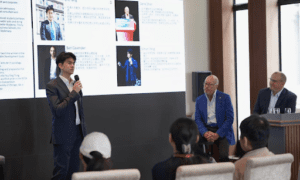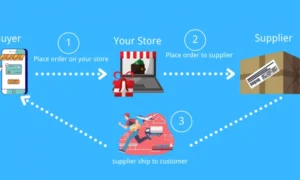In mid-October, the University of Washington’s careers site still showed a rolling feed of remote roles pulling from Handshake. The University of Missouri Career Center, meanwhile, was nudging students toward short, paid “micro-internships.” Colleges aren’t waiting for summer placements to help students get experience—they’re pointing to bite-size, often remote projects that build evidence quickly, according to recent updates from UW and Mizzou.
Here’s the shift: hiring managers say skills and outcomes matter more than titles. That’s useful in 2025, when internships still convert unevenly—employers extended full-time offers to 62% of their 2024 interns, the lowest in five years, according to data from NACE. If you’re breaking in remotely, you can assemble credible proof—fast—through campus listings, micro-internships, and coursework-plus projects.
Why experience signals matter for remote-first hiring in 2025
Remote screening is relentless. Most HR leaders use technology to filter and rank applicants, which pushes your résumé toward clear, verifiable outputs; SHRM notes that the majority of HR executives deploy AI-enabled tools somewhere in the funnel. At the same time, internships aren’t a guaranteed pipeline: NACE’s 2025 report shows a 62% offer rate and lower conversion than previous years.
The takeaway: you need “experience signals” that travel well in digital hiring—links, artifacts, concise metrics, and named tools. Micro-internships (10–40 hours), virtual job simulations, and course-embedded projects produce those proof points on a timetable you can control.
Where universities list remote roles (and how to surface them fast)
Start with your campus career site; many syndicate remote roles from Handshake. The University of Washington, for example, maintains a “Remote Jobs” category that’s continuously refreshed via its Handshake feed.
Do this:
- In Handshake, filter for “Remote” or “Hybrid,” then save the search and turn on email alerts.
- Add keywords that map to entry-level scope (“assistant,” “associate,” “coordinator,” “junior,” “analyst I”).
- Set two alerts: one broad (“remote, marketing”), one narrow (“remote, Salesforce,” “remote, Python”).
Result: you’ll see 5–15 new roles a week in common early-career lanes, and you can move inside 24 hours of posting—often the difference between a screening call and silence.
Micro-internships & coursework-plus projects that count
Micro-internships are short, paid professional projects—often remote—run year-round. Parker Dewey defines them as 10–40 hour assignments due in one to four weeks. Several universities now promote these alongside traditional internships.
Virtual job simulations are structured, self-paced modules that mirror entry-level tasks. Yale’s career office describes Forage programs as 6–8 hour experiences that you can add to your résumé.
If you need paid, short-duration projects, Riipen’s Level UP funds 2–8 week remote sprints with a $1,400 stipend per completed project, paid directly by Riipen.
Ops & support sprints
What counts: 5–40 hour tasks that mirror helpdesk, QA, or customer ops. Examples include building a quick Zendesk macro library, triaging 100 support tickets with tags, or auditing a knowledge base for broken links.
Save artifacts: a one-page SOP, “before/after” screenshots, and a short Loom walk-through. Outcome to track: “reduced average first response by 28 seconds across 50 tickets over one week.”
PMO / coordination lite
Translate class teamwork into project office (PMO) outputs. Deliverables: a requirements brief (one page), a prioritized backlog (20–40 items), a two-sprint plan, and a retrospective note.
For a micro-internship, you might run a 15-item backlog in Trello, complete two demos, and ship a retro. Outcome to track: “delivered 90% of sprint commitments; cut open issues from 14 to 3.”
Content & data mini-builds
Offer a search brief for three landing pages, a 3-chart analytics dashboard, or a taxonomy cleanup in a CMS.
Artifacts: a keyword map, a shareable dashboard link, and a change log. Outcome to track: “consolidated 22 duplicate tags to five; improved internal search find rate from 62% to 74% in a two-week window.”
Turn projects into résumé bullets that pass ATS
Use a simple template: Action + Tool + Scope + Outcome. Example: “Built a 3-page onboarding FAQ in Notion (15 articles, 40 screenshots), cutting repeat questions 22% over two weeks.” Place a “Projects” section above “Experience” if your roles are unrelated; otherwise, weave projects under each role as bulleted achievements. Rename courses to match job language—“Data Structures” can become “Python Data Structures (pandas, NumPy).”
Before applying, run an ATS-style scan to catch missing keywords and formatting quirks—use a resume checker to surface gaps against the job description.
Quantify impact when numbers are fuzzy
Use proxy metrics and time bounds:
- Coverage: “tagged 120 SKUs; 0 errors in spot check.”
- Speed: “turned around 15 tickets/day; met 24-hour SLA.”
- Quality: “QA checklist cut post-publish fixes from 9 to 2 per release (two sprints).”
Where data is sensitive, state the scope note: “across a 10-day pilot,” “sample of 50 orders,” or “non-prod environment.” This gives hiring teams scale without breaching NDAs.
From class project to 90-second demo
Script three beats: problem → what you built → impact. Keep your screen share tight—one diagram, one workflow, one result table. Practice a 20-second “headline” version for recruiter screens and a 90-second version for hiring managers. Link the demo from your résumé and Handshake profile.
Publish your proof where recruiters look
Add artifacts to places sourcers actually check: your Handshake profile, LinkedIn “Featured,” and a lightweight portfolio. Universities actively steer students to Forage modules; Yale explains how to list them succinctly (Yale Office of Career Strategy).
Post one 60–90 second demo video per project. Aim for a clear title (“Support Macro Library: 30 Tickets/Day Pilot”), a one-paragraph description, and a link to the doc bundle.
Pitfalls to avoid with remote gigs
Be wary of unpaid “trials” that look like spec work without clear learning or supervision. Check classification and NDAs before handling customer data. Don’t over-claim—if you contributed to a team output, say so and specify your slice. If in doubt, ask the supervisor to confirm language you’ll use publicly.
30-60-90 action plan
Days 1–30: Set two remote job alerts in Handshake; complete one Forage simulation; apply for one micro-internship (Parker Dewey) and one Level UP project (Riipen). Publish a one-pager artifact and a 60-second demo.
Days 31–60: Ship a second micro-project (content or data); refresh your résumé with two new ATS-friendly bullets; add links to Handshake and LinkedIn. If starting from scratch, pick clean resume templates and export to PDF for consistency across systems.
Days 61–90: Aim for one paid sprint and one class-to-portfolio conversion. Target 4–6 linked artifacts total, each with a metric. Track responses: if you’re under a 5% screen rate after 25 applications, adjust keywords and lead with your two strongest projects.
You can’t control every gate in remote hiring. You can control how fast you turn work into proof. Keep projects short, artifacts linkable, and outcomes specific. The payoff is cumulative: two or three credible builds create momentum that titles alone rarely do.
Read More From techbullion






























